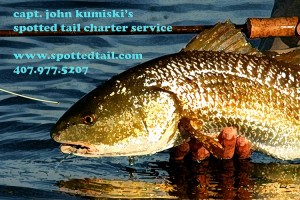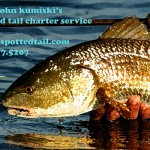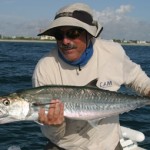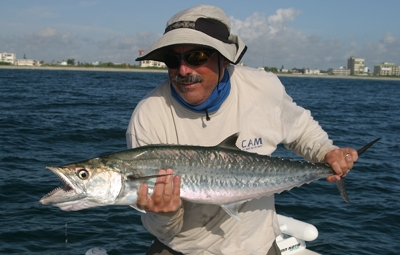
Central Florida fishermen want to know how to catch more and bigger fish in the Mosquito Lagoon. On March 3 an all day Show and Tell Seminar held on the Merritt Island National Wildlife Refuge will show them how and tell them where to do just that.
Instructor John Kumiski says, “I designed this seminar with the express purpose of helping attendees catch more and bigger fish. During the all-day seminar we cover fishing techniques for redfish, seatrout, tarpon, and other species, spinning and fly flats tackle, boats, wading, choosing and using lures and baits, fish fighting techniques, knots, etiquette, and more. We drive all through the refuge, discussing where to wade, where to launch power and paddle boats, and of course we discuss specific locations and how to fish them.”
Plenty of time is dedicated to question and answer, too.
You will learn more in one day during this popular seminar than you could learn in a year on your own.
The cost of the seminar is $60 per person, with children under 12 free.
Registration is on-line. Go to this link:
http://www.spottedtail.com/Seminar-MINWR-Show&Tell.htm
Here’s what attendees at past seminars had to say:
“I just wanted to write and thank you again for the seminar on Saturday. It would have taken me at least a year of scouting to learn what we did in nine hours from you, and that’s just the information on when and where to catch fish. The instruction on techniques and tackle would take years of experimentation to learn on my own!” -Steve Crowder
“I want to thank you for a very interesting fishing seminar! I learned a great deal about our resident redfish, and can’t wait to apply what you’ve taught me.” -Jeff Graybeal
“I really enjoyed your fishing seminar yesterday. I am a fly fisherman from the rivers of the Pacific Northwest, so I learned a ton about shallow salt water fishing. It will be invaluable to me as I begin to explore the Space Coast.” – Mark Mielbrecht
“A couple of friends attended your Show and Tell yesterday. Rave reviews. Mark was effusive in his email about the whole experience. He can’t wait to get back out. Every time I send someone your way they come back a satisfied customer. Nice job!
-Mike Adamson
“I really enjoyed Saturday. You made it really hard to go back to work instead of fish!”
-Greg Rhodes
Sign up now! http://www.spottedtail.com/Seminar-MINWR-Show&Tell.htm
John Kumiski
http://www.spottedtail.com




Recent Comments